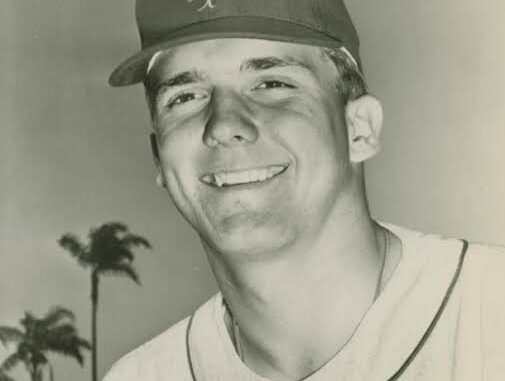
the chance to practice was almost as hard as learning the new pitch.
Despite the success many major leaguers had with the pitch, there was always trepidation regarding the pitch. Hubbell had been spurned by Tigers player-manager Ty Cobb in the 1920s because he thought the screwball would ruin the kid’s arm. (It did, but not before he’d won 253 games.) John McGraw, whose New York Giants had been dominant behind Christy Mathewson’s “fadeaway” — a successful right-handed version of the pitch — signed Hubbell in 1928. John McGraw was long dead by the time Tug McGraw (no relation) was making his way back to the big leagues. And innovative thinking was in short supply in the minor leagues with those moribund Mets.
Not content to spit on Tug’s screwball, Sheriff Robinson also tried to change the way Tug threw his curveball. Tug couldn’t make it work so he went back to doing it his own way. He earned praise from the salty Sheriff, who thought he’d gotten the young pitcher to see things his way. Tug’s brother Hank, who would later famously be suspended for not cutting his hair, set the Sheriff straight. “You dumb high school coach,” Hank shouted, “that just goes to show that you don’t know what you’re talking about. He tried to throw it your way and he couldn’t, so he went back to throwing it his way and you like it. Why don’t you just leave him alone and let him do his own thing.” Hank never reached the big leagues after putting in a dozen years in the minors.
Despite winning the International League ERA title (1.99) for Jacksonville in 1967, Tug McGraw did not pitch in the majors at all the following year — going 9-9 with a 3.42 ERA in 23 starts at Jacksonville — and was available in that fall’s expansion draft for the first three rounds. Luckily for the Mets, there were no takers in Montreal or San Diego. After an excellent spring training and a solid start to the 1969 season for Tug — among other April feats, he earned the Mets’ first win of the season while handing the Montreal franchise its first-ever defeat — manager Gil Hodges made a decision that would change McGraw’s career.
“The only other pitcher with a screwball was Jim Brewer of the Dodgers, so the hitters weren’t used to seeing it,” McGraw said. “By June, I was still pitching well and Gil called me into his office again. He said, ‘Tug, I have three pieces of advice for you. One, I think you should think about staying in the bullpen permanently. You could be a great reliever and at best an average starter. Two, this team needs a late-inning stopper, and I want you to be my stopper. Three, I think you’ll make a lot more money as a reliever than as a starter. Now it’s up to you.’ I said, ‘Gil, if you think that’s the way for me to go, I’m there already.’ The rest is history.”
McGraw and veteran righty reliever Ron Taylor were vital instruments in New York’s overcoming a 10-game deficit to the Cubs on August 13. While Mets starters were completing 21 of their last 48 starts, the bullpen was nearly flawless when called into service. In his last 19 appearances, McGraw allowed two earned runs over 38 innings for a 0.47 ERA. Together McGraw and Taylor went 7-2 in the final push with 11 saves and an ERA of 1.00. For the year, McGraw had 12 saves and Taylor 13 in the first year in which the save was an official statistic.
Leave a Reply